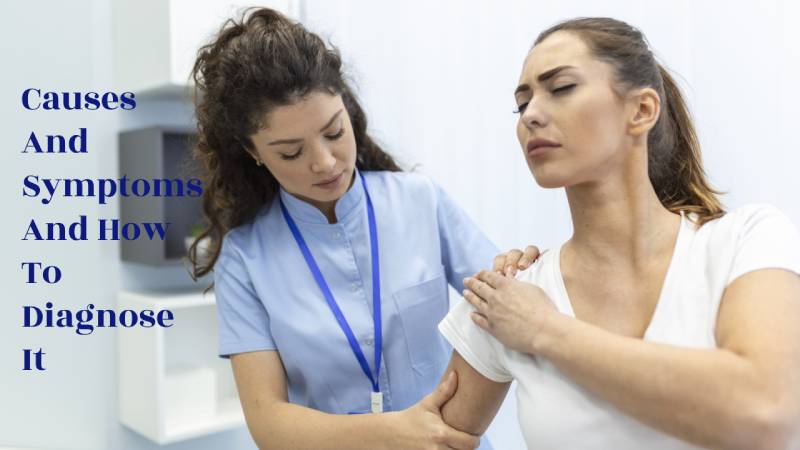In recent times, children and the elderly alike are becoming increasingly susceptible to Rheumatoid Arthritis diseases. This begins with lining tissues on both sides of our body being attacked and causing pain in our joints by our immune system. There is still no evidence of how this disease occurs. This disease may also affect other parts of our body. To treat this disease, you need to make lifestyle changes, along with nutritional, physical, and occupational therapy, and you also need to take the appropriate medication if it becomes severe Doctors may suggest surgery.
Table of Contents.
How to know Rheumatoid Arthritis Symptoms
Rheumatoid arthritis is considered an autoimmune disease This disease not only affects lining tissues and organs but also spreads to other parts of our body. This disease causes us to have very severe pain. You may notice that our body joints are swollen or stiff, unable to move (synovium).
We can notice our feet, toes, wrists, and fingers have the most impact and also on our ankles, elbows, and joints. This disease occurs in the same type of joints on both sides of our body at the same time. It is a little different from other arthritis. A severe inflammation can develop in our joints and damage our cartilage. Cartilage is nothing but works like a “shock absorber” in the joints of our body. The severity of this disease is such that it gradually weakens our joints, eventually causing your bones to weaken and lose their strength, which can lead joint fusion.
Our body’s infection-fighting system and immune system are attacked by specific cells. This process causes substances in our joints and carried and they spread to the rest of the body throughout the body causing symptoms.
Rheumatoid arthritis not only affects our entire joint but also affects other parts of our body. They are:
- Heart,
- Skin,
- Mouth,
- Eyes,
- Lungs
Rheumatoid Arthritis Occurs in Four Phases
Phase 1: The first Phase of this disease is that you may have joint pain and stiffness and there will be swelling in the tissues around your joints and a little bit of redness and light red. On X-rays, they don’t see any destructive changes in your bones.
Phase 2: This will gradually decrease the moment of your joints in the second stage, which will make you feel a little uncomfortable. The swelling of our tissues increases and becomes a point of destruction for our cartilage.
Phase 3: In this third stage, you will also see physical changes in your body. This tissue inflammation can become so severe that it can even damage our bones, causing us severe pain and making us unable to move our joints.
Phase 4: In this fourth stage, the swelling of our tissues decreases but the severity of our bone pain increases, which makes us feel completely numb.
It takes people who have been suffering from Rheumatoid Arthritis for takes few years. but some people don’t come even until the fourth stage of the disease.

Causes When will People be Affected by Rheumatoid Arthritis
This disease usually affects people between the ages of 35 and 65. This disease cannot be said to occur at a specific age because it can occur at any age. It can occur in young children, from 16 to 40 years old. It can also occur in young children and adults is called young-onset rheumatoid arthritis. t can happen to older people at the age of 65 then it is called as later-onset rheumatoid arthritis.
Causes and Symptoms are
- We have Stiffness and pain in more than one joint tissue of our body
- Stiffness in our joints occurs when we sit for long periods or in the mornings
- Pain that occurs in the same joints and stiffness on both sides of our body at the same time
- Getting tired quickly, feeling weak, and having a fever.
Rheumatoid Arthritis Symptoms depend on how healthy a person is because for some it shows symptoms like swelling and inflammation quickly. For some people, it doesn’t show any effects at all, and for some people develop these symptoms very slowly it goes to a few years.
Tenderness or pain in the small joints of your feet, such as the toes and fingers, and redness can say Otherwise, you may feel a little pain in your knees and your elbows and shoulders the first signs of Rheumatoid Arthritis. We won’t notice or take such minor pains lightly because if we diagnose the disease early we can start the medication early and avoid further seriousness, once prompt treatment begins, we can get out of a situation where we can damage our joints.
The exact causes of rheumatoid arthritis are not known, but researchers believe it is caused by some factors. They believe it may be genetic, hormonal imbalances, or environmental factors. Normally, our immune system protects us from disease, but something triggers the immune system to attack the body’s own tissues. Researchers believe that infections, smoking, or physical and emotional stress may also be factors.
How it occurs, its risks, and how to diagnose it.
Let’s look at the problems. First, let’s look at who is at risk of developing rheumatoid arthritis. Many factors contribute to arthritis.
- Some of these are: family history, close relatives, or those who have them.
- Sex: Women are more likely to develop rheumatoid arthritis than men.
- Smoking can make arthritis worse or make the disease more severe.
- If you are obese, you are more likely to get it.
The complications of arthritis can lead to more problems:
Some of these include:
- Damaged or deformed joints,
- viral infections,
- carpal tunnel syndrome,
- osteoporosis,
- heart diseases,
- and other conditions.
Now let’s look at some of the other things you need to know about the immunizations and tests you should get. If you go to the doctor to get a diagnosis of rheumatoid arthritis, your primary care provider will refer you to a doctor who specializes in arthritis. They will do a physical exam and ask about your medical history and symptoms. They may also order tests and imaging tests for rheumatoid arthritis. Now let’s look at some of the blood tests that can help diagnose rheumatoid arthritis.
Some of these tests can be done to help you see if your joints are getting worse. The rheumatologist may order imaging tests.
These May Include
- X-rays,
- ultrasound,
- magnetic resonance imaging scans, etc.
These can all be done in advance, as your provider will see how you do over time.


